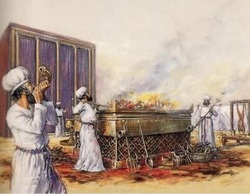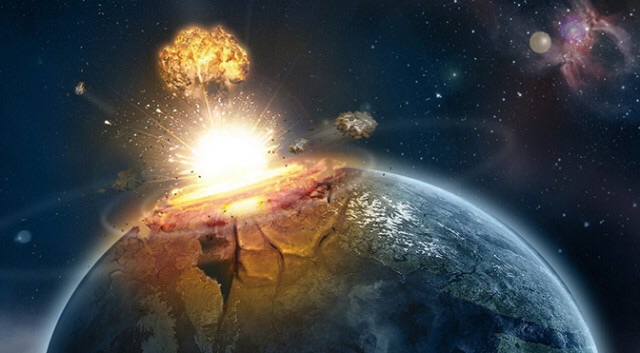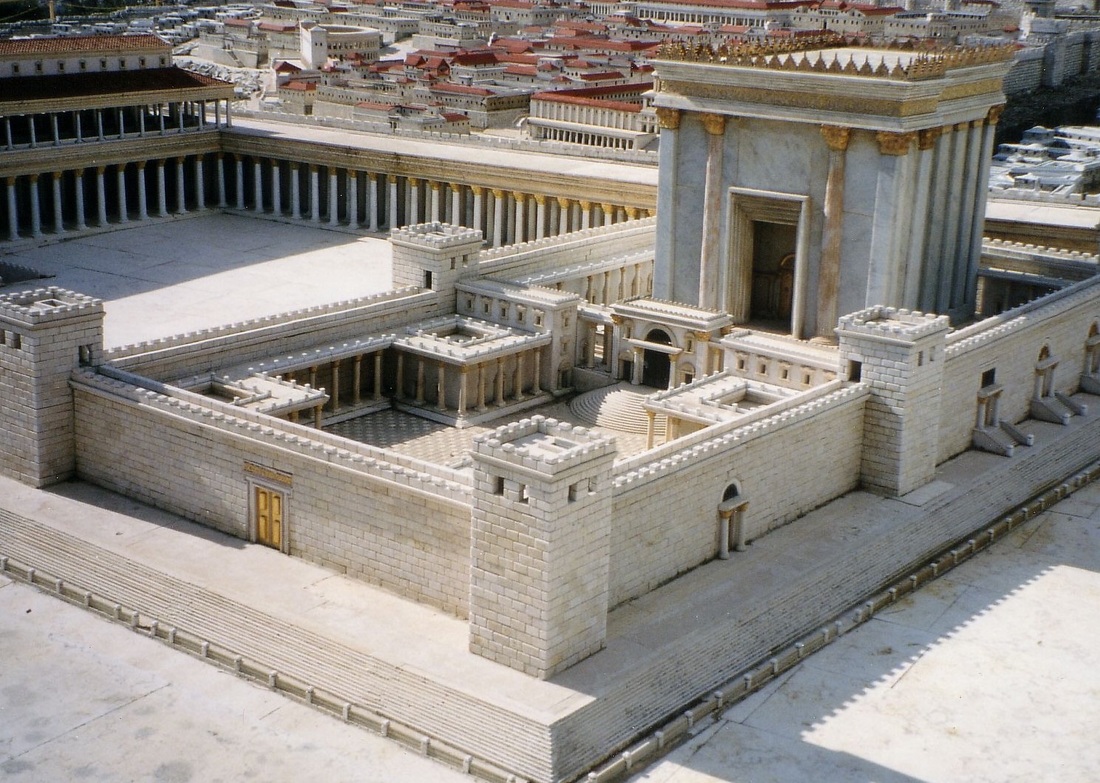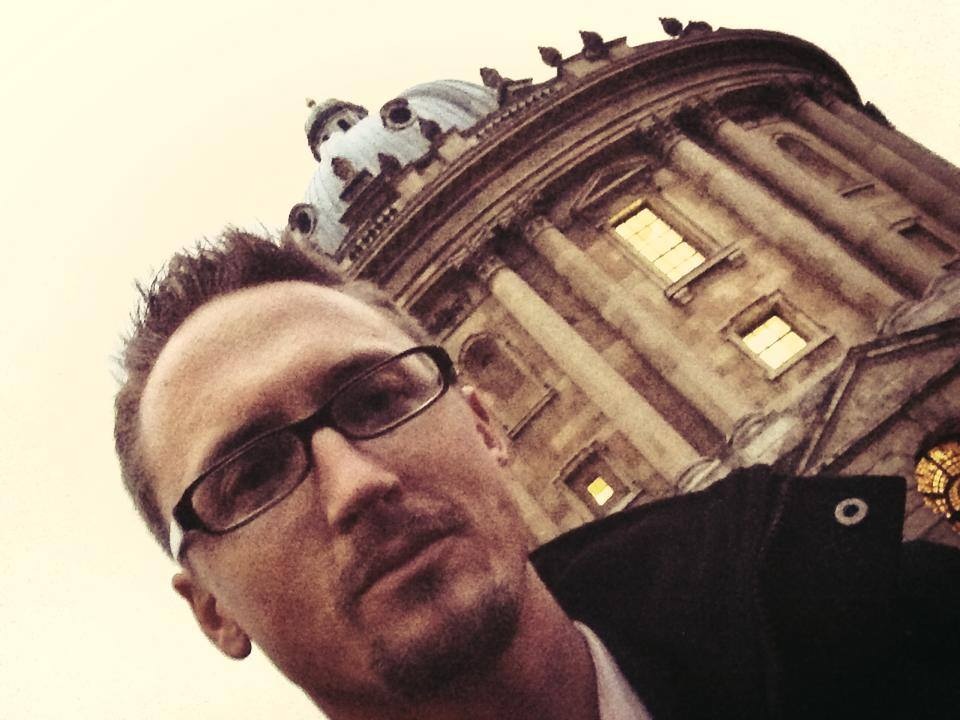
If we were still waiting for some cataclysmic event to happen before we were set free from obedience to the Mosaic Law, what would that practically mean for Christians today? It would have huge implications. If “heaven and earth” haven't passed away, we would have a backlog of Jubilee years to celebrate, “cities of refuge” to resurrect (which is a law requiring certain cities to protect sinners from people trying to vengefully hurt them), and bleeding lambs to burn on an altar. Forget Sunday. We would need to go back to the Sabbath rest on Saturday. And we would have to throw out our clothes that mix linen and cotton and kill our rebellious children. If you weren’t aware, the Law of Moses has some serious instructions.
So why don't Christians obey every letter of the Law if Jesus said it all applies “until heaven and earth pass away”?
It’s an important question to answer, and very few Christians have taken the time to address it. But before we start in forcing the law of Moses again, let’s make sure we understand what Jesus meant. The historical background is going to blow your mind. It will require you to put down your apocalyptic imaginations of meteors hitting earth and start seeing the world Jesus talked about.
Jews did not always mean “the physical universe” when they spoke of heaven and earth together. In Jewish literature, the Temple was a portal connecting heaven and earth. They called it the “navel of the earth” and the “gateway to heaven” (Jub 8:19; 1 Enoch 26:1). Just like the Mesopotamian Tower in Genesis 11, the Temple connected God’s realm to where humans lived.
To reflect this belief, the Jerusalem Temple had been built to look like a microcosm of the universe. We typically overlook how literally true the Temple hymn preserved in Psalm 78:69 is: "He built his sanctuary like the high heavens, like the earth, which he has founded for ever." The actual holy place and most holy place inside the Temple building were constructed like earth and heaven. The courts outside represented the sea. I am not making this stuff up.
According to Josephus, two parts of the tabernacle were "approachable and open to all“ but one was not. He explains that in so doing Moses "signifies the earth and the sea, since these two are accessible to all; but the third portion he reserved for God alone because heaven is inaccessible to men" (Ant. 3:181, cf. 3:123). The veil between’ the accessible and inaccessible parts of the Temple was designed to represent the entire material world during Jesus’ day. Josephus and Philo agree that the veil was composed of four materials representing the four elements—earth, water, air, and fire (War 5:212-213; Ant. 3:138-144; Quaestiones in Exodum 2:85, cf. Mos 2:88). Heaven was beyond this material world. It was behind the curtain.
Outside the Temple’s microcosm of “heaven and earth,” the courts looked like the sea. Numbers Rabbah 13:19 records, "The court surrounds the temple just as the sea surrounds the world." In Talmudic tradition, Rabbis described how the inner walls of the Temple looked like waves of the sea (b. Sukk. 51b, b.B.Bat. 4a). From heaven and earth inside the temple, you looked out at the sea surrounding the world. Why? Ancients believed the earth had one giant land mass surrounded by sea. The temple reflected that cosmology. The accessible section of the Temple and the surrounding courts embodied both the land mass and sea believed to comprise the earth. The Most Holy Place was heaven where God's presence resided.
If we listen to Jesus in First-Century Israel, his prediction of “heaven and earth” passing away sounds like the destruction of Jerusalem and her Temple. The contemporary songs, writers, and architecture all make the connection between Jerusalem’s Temple and “heaven and earth.” Isaiah used the same language of “heaven and earth” to depict Jerusalem and her citizens in Isaiah 65:17-18.
“For behold, I create new heavens and a new earth and the former things will not be remembered or come to mind. But be glad and rejoice forever in what I create; For behold, I create Jerusalem for rejoicing and her people for gladness.”
Isaiah is predicting the eventual reconstruction of Jerusalem after its destruction at the hands of invaders. He uses Hebrew parallelism to equate the creation of “new heavens and a new earth” with the restoration of Jerusalem. So Jesus isn't the first prophet to describe Jerusalem and her temple with grand language describing its theological significance. Jerusalem was the place where people encountered the presence of God on earth. The Temple is where heaven met earth.
Interpreting Jesus’ language of “heaven and earth passing away” in Matthew 5:18 as the destruction of Jerusalem and the Temple fits with the rest of Jesus’ prophetic message. Like Jeremiah smashing a pot outside the city to predict Jerusalem’s fall to Babylonian invaders (Jeremiah 19), Jesus symbolically acted out God’s judgment on the Jerusalem Temple and verbally condemned it (Mark 11). Remember all those tables he flipped over as he yelled, “You have turned God’s house of prayer into a den of thieves!” In Luke 21:20-24 Jesus gave a graphic picture of how Jerusalem will be surrounded by armies and the Temple destroyed.
Jesus knew that Jerusalem and her Temple were about to be destroyed, and he gave it great significance in his teaching. The entire Torah would be set aside once the Temple crumbled. What would replace it? Jesus’ words according to Matthew 7:24. The entire Sermon on the Mount with its blessings, curses, and instructions given from a mountain (sound like Moses' law given on Mount Sinai!?!) are designed to be the new giving of God’s instructions. Jesus is redefining Torah in the same teaching where he says, “Until heaven and earth pass away not the smallest letter or stroke shall pass from the Law.” The Torah will remain in force as long as the Temple stands, but Jesus gave a new Torah for when it fell.

If you listen to Jesus with modern astronomy in mind, you will be responsible to obey the Mosaic Law. You're still waiting for the physical space-time universe to collapse so you can stop your ritual purifications and celebration of Succoth. But “heaven and earth” for Jesus wasn't a planet in a galaxy. He was obsessed with where heaven met earth in Jerusalem not the physical universe.
When we mix our assumptions with Jesus’ message, we mess everything up. We create confusion and contradictions of thought in the Bible. We have to conclude that the Mosaic Law reigns until the meteors incinerate our world. Or we just have to ignore Matthew 5:18 along with all the other sayings that make no sense outside their original context.
So hear what Jesus said in First-Century Israel. And relax. You don't have to switch your Sabbath back to Saturday or kill your rebellious kids. You can keep eating bacon (Hallelujah!). “Heaven and earth” passed away when the Romans sacked Jerusalem in 70AD and everything changed. No need to wait for the meteoric destruction of planet earth to stop sacrificing animals and avoiding shellfish in your diet.
Hebrews 9:8-9 stated that the Temple was a symbol of “the present time,” not the New Covenant age that Jesus inaugurated. The arrival of the New Covenant age that Jesus’ death and resurrection made possible meant the Old Covenant with its Temple, sacrifices, and laws would soon come to an end. Hebrews 8 describes that transition as the fulfillment of Jeremiah’s prophecy about a New Covenant that will replace the Old Covenant. After Jeremiah 31:31-34 is quoted in that letter, Hebrews 8:13 says, “When God said, ‘A new covenant,’ He has made the first obsolete. But whatever is becoming obsolete and growing old is ready to disappear.” Hebrews is talking about the impending destruction of the Temple in the first century. When that happened during the Roman invasion of Jerusalem, the Old Covenant was retired and Jesus’ words remained as the binding instructions to follow to maintain a relationship with God in the new era Jesus had announced. That is the era in which we now live, free from the requirement to obey every little law in the Old Covenant. And that is part of the good news about the Kingdom that Jesus pioneered during his time on earth.
Excerpt from my next book redefining what Jesus really meant in many misunderstood statements where the original context has been missed or ignored. Tentative title is Listening to Jesus in First-Century Israel: so we don't westernize his message and follow the wrong directions







 RSS Feed
RSS Feed
